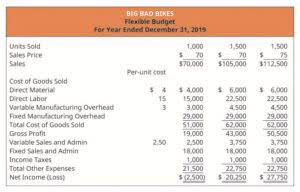Understanding payment reconciliations: step-by-step guide & best practices

The business processes thousands of payments per day through various payment processors, banks, and financial systems. For instance, if a business invoices a client for Rs 1,00,000 payment reconciliation ensures that the corresponding Rs 1,00,000 payment is recorded correctly in both the company’s books and the bank’s records. To avoid excessive time spent reconciling small differences, it’s advisable to set thresholds. When the difference falls within this range, it doesn’t require immediate attention. Instead, employees can direct their efforts toward resolving more significant discrepancies that have a more substantial impact on financial accuracy.
International Transactions:
You can also opt to maintain the records of your transactions using Excel or Google spreadsheets. It’s another manual data entry technique and requires more time utilization than accounting software. When it comes to payment reconciliation it’s a different concept than payment settlement. Payment reconciliation can be said to be a process of reviewing business transactions. Evaluate how easily the payment processing software can balance sheet be integrated into your existing systems.
Should Boomers Factor Into a Digital Banking Strategy?

By reconciling financial records, such as bank statements, invoices, and receipts, businesses can identify discrepancies and irregularities and protect themselves against potential fraud. At the end of each month, you need to gather all relevant financial data for reconciliation, including sales records, reports from your payment gateway providers, and monthly statements from your business bank account. You start by matching each sale recorded in https://www.bookstime.com/ your e-commerce platform with the corresponding payment in your payment processor’s report.
- The sheer number of ways money flows out and inside the bank accounts makes this process complex.
- Automated payment reconciliation technology can process a large number of transactions simultaneously and handle repetitive tasks, improving businesses’ efficiency and productivity.
- The process is an essential part of every government organization’s revenue management strategy.
- Payment reconciliation is a basic accounting process that ensures the identity and integrity of data between payment vendors and bank accounts.
- After all, the period starting from Halloween and up until New Year’s Eve is incredibly busy and requires fast and efficient handling of sales, special offers, and refunds.
To maintain the accuracy of business’ financial records
These tools enhance your department’s capabilities by putting powerful tools in the hands of your team. Let’s dive deeper into the meaning and methods of payment reconciliation, along with payment reconciliation software, tools, and systems powerful enough to enhance the process for your government organization. It can be also important that you are able to make changes yourself, for example in the matching rules. Since reconciliation happens through one system, that system also collects data on how the corresponding cash flows, which can be traced to provide better visibility for treasury, accounting, or finance. Automated reconciliation will also enable you to catch unpaid invoices and bills and is great for working capital optimization because it improves the timeliness of financial closing.
- Financial software, manual paperwork processing, saving receipts, and managing an Excel spreadsheet of payment records are a few of the ways you can perform inward reconciliation.
- Automation accelerates the payment reconciliation process, facilitating more frequent financial closings.
- When those discrepancies and errors are spotted, the business should investigate the reasons why those arose in the first place.
- Now it’s your turn to make your business highly competent at handling its bookkeeping with the help of accounting automation and payment reconciliation.
- The other day I was talking to a customer, and she mentioned that investing in a payment reconciliation solution has been the best thing that has ever happened to their department.
- When transactions are periodically reconciled, businesses can trust their cash flow is being precisely tracked.
Employees have payment reconciliation to manually compare the statements and records, which often results in delays and inaccuracies, making the entire process a mess. Cashflow management is essential for any business to keep operations running and meet unexpected expenses. With payment reconciliation, you can identify discrepancies and accurately predict and manage cash flow. The major goal of a reconciliation process is to make your company’s accounts accurate.


If your business deals with multiple currencies, ensure you have up-to-date exchange rate records to reconcile foreign currency transactions accurately. Automated payment reconciliation technology can process a large number of transactions simultaneously and handle repetitive tasks, improving businesses’ efficiency and productivity. Without a reconciliation solution, you won’t know which payments have been actually disbursed, leading to undetected attempts of fraud. The disbursements (payouts) and deposits are compared against the company’s bank statements and books in bank reconciliation. Reconciliation, the crucial piece of ensuring every transaction aligns perfectly across multiple records, is more than a mere technical requirement—it’s essential for sustaining trust.

Save Time and Reduce Manual Work
- Payment reconciliation is the process of comparing bank statements to your billing statement to ensure your records are accurate and up-to-date.
- So, by the time the gateway processes the transaction, the platform times out and assumes it failed.
- There are many ways a company can ensure their records, finances, and supplies are in sync.
- On the other hand, if any transaction doesn’t match, it’s a clear indication that there’s something wrong with the accounts.
- The disbursements (payouts) and deposits are compared against the company’s bank statements and books in bank reconciliation.
Real-time access to transaction data should be covered so businesses can quickly identify and resolve any reconciliation discrepancies. Maintain clear and consistent documentation of all financial transactions, including invoices, receipts, and payment records. Automating tasks performed manually results in significant cost savings for a business. It liberates employee resources, enabling finance teams to concentrate on more strategic activities. Banks and financial institutions may make errors in processing transactions or providing statements. If errors are found, you need to make adjustments to the financial records to correct them.